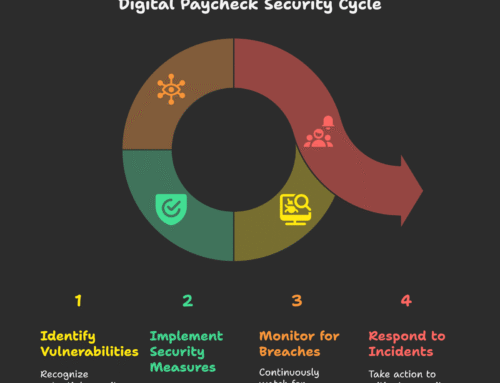Acquiring and retaining top talent can be a challenging task for any organization. However, ensuring that employees have ample opportunities for professional growth and development can make this task substantially easier. After all, retaining top talent means retaining talent.
Investing in employees is crucial to keep them engaged and to ensure the continued success and growth of the company. In this article, we’re going to explore an array of strategies that you can use to foster an environment where everyone has room to grow and thrive.
Image by Freepik
10 Different Ways to Provide Professional Growth Opportunities
In a competitive business landscape, investing in employee development is more important than ever. Here are 10 effective strategies to promote growth and why they matter in your startup.
1. Establish a Mentoring Program
Establishing a mentoring program can be an extremely beneficial way to foster professional growth and development in your employees. A structured match between a seasoned employee (mentor) and a less experienced one (mentee) can create a knowledge-exchange environment.
While 76% of employees feel that mentorship is important, only about 37% have one. To increase that number, employers must set up a mentorship program in their workplace.
2. Promote Continuing Education
Encouraging your employees’ pursuit of additional courses or certifications brings inherent value, empowering them with further insights into their fields. You can even offer your staff helpful education materials, such as a guide to pass CFA level 1 for financial analysts.
80% of employees want to pursue continuing education. But to encourage them to go back to college, employers need to outline how their degree will lead to internal career advancement.
3. In-House Training Sessions
In-house training sessions encompass workshops, skill-sharing presentations, or informal lectures tailored specifically for your employees’ roles and responsibilities within the company. These sessions help close skill gaps and allow staff members to share their expertise.
According to Gallup, in-house training sessions will increase engagement. A business with an engaged workforce will achieve a 59% lower staff turnover rate, which, in turn, saves money.
4. Invest in Leadership Development Programs
Leadership development programs help employees build leadership skills, learn about strategic decision-making, and improve their ability to manage teams effectively. They benefit those poised for managerial or supervisory positions and the employees who work under them.
A Training Industry study found that businesses saw an ROI of 29% within only three months of leadership development training and an annual ROI of 415%, making it a good investment.
5. Provide Job Rotation Opportunities
Job rotation involves moving employees from one role to another within different departments of the organization. This exposure helps broaden their skill set, expands their understanding of the overall business operations, and creates a more flexible and adaptable workforce.
In a study, 89.6% of employees felt that job rotation fulfilled their need to gain multiple skills, 96% of them said they became more productive, and 89.6% became better problem-solvers.
6. Encourage Attendance at Industry Conferences
Industry conference events can be treasure troves of the latest trends, innovative ideas, and sage wisdom from pioneers in the field. The insights gathered can directly benefit your business when employees apply their learnings to their roles. Plus, it helps employees network.
A Promoleaf study states that 70% of employees prefer in-person conferences to online ones. This makes sense, as in-person conferences help employees build more intimate connections.
7. Offer Remote Learning Opportunities
With online courses and webinars, employees can conveniently expand their skill sets while maintaining flexibility. Platforms such as LinkedIn Learning, Coursera, or your own learning platform provide a variety of educational content that employees can access at their own pace.
L&D leaders have reported that online learning opportunities have improved. 90% also believe that the switch to online learning produced more positive outcomes than in-person training.
8. Set Performance Goals and Review Regularly
Setting performance goals gives your employees a clear picture of what is expected, which helps them align their efforts effectively. These goals should be challenging yet achievable, pushing employees out of their comfort zones to learn and grow at a good pace.
A study conducted by BiWorldWide found that employees with goals are 3.6 times more likely to be committed to an organization. Committed employees are less likely to quit or take sick days.
9. Implement Employee-led Innovation Projects
Implementing employee-led innovation involves allowing employees to come up with and execute creative solutions or proposals related to improvements within the company. This fosters a sense of ownership among the workforce while also fueling their problem-solving skills.
Studies show that employee-led innovation projects are rare, but they often lead to good or very good results. When employees are allowed to take the reins, new, money-making ideas flourish.
10. Offer Soft Skills Training
Soft skills include but aren’t limited to teamwork, problem-solving, communication, emotional intelligence, and time management. Employees who master these skills not only perform better in their roles but also exhibit resilience and adaptability in changing work environments.
89% of recruiters said in a LinkedIn study that when a hire doesn’t work out, it usually comes down to a lack of soft skills. Soft skills can literally make or break the quality of a hire.
In Conclusion
Now that you’re equipped with these strategies, it’s time to start investing in your most valuable asset: your employees. Remember, fostering an environment of continued learning and growth is not only beneficial for the individual but also for your business’s overall health and success.
As you encourage professional development, you’ll reap the rewards of increased engagement, productivity, and loyalty. In the process, remember to be patient and consistent in your efforts.







Leave A Comment